Chess has a cruel sense of humor. It often delivers a humbling reminder that no one is immune to spectacular blunders, even outstanding chess players.
You might wonder, what is a blunder in Chess? These are not subtle positional misjudgments or complex tactical oversights.
Blunders that left spectators, commentators, and the players themselves in complete disbelief.
A clean piece loss, an obvious mate missed, a downright Oh, No My Queen! Moment.
Moments when top players who can see twenty moves ahead suddenly can’t see one move ahead.
Even legends have their “oops” moments, and that is what we will cover in this article.
Infamous Blunders by Great Chess Players
This is a collection of some of the top five memorable and shocking blunders in chess history.
- Vladimir Kramnik’s Mate-in-One Miss 2006
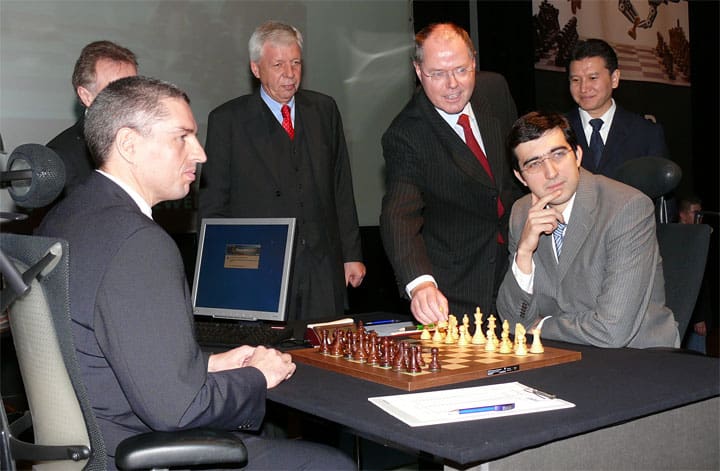
Vladimir Kramnik is one of the ten best chess players of all time.
Which makes his mate-in-one miss against Fritz in 2006 even more uncanny.
It was so absurd that spectators thought this was a joke, or that they were analyzing after agreeing to a draw.
In Game 2 of the man-versus-machine match, Kramnik found himself in a complex but playable position against the early chess engine Fritz.
Both man and machine still had about 30 minutes on the clock. But it looked like things were going to finish in a repetition.
Then came the moment that would haunt Kramnik forever because he played the ridiculous 34… Qe3.
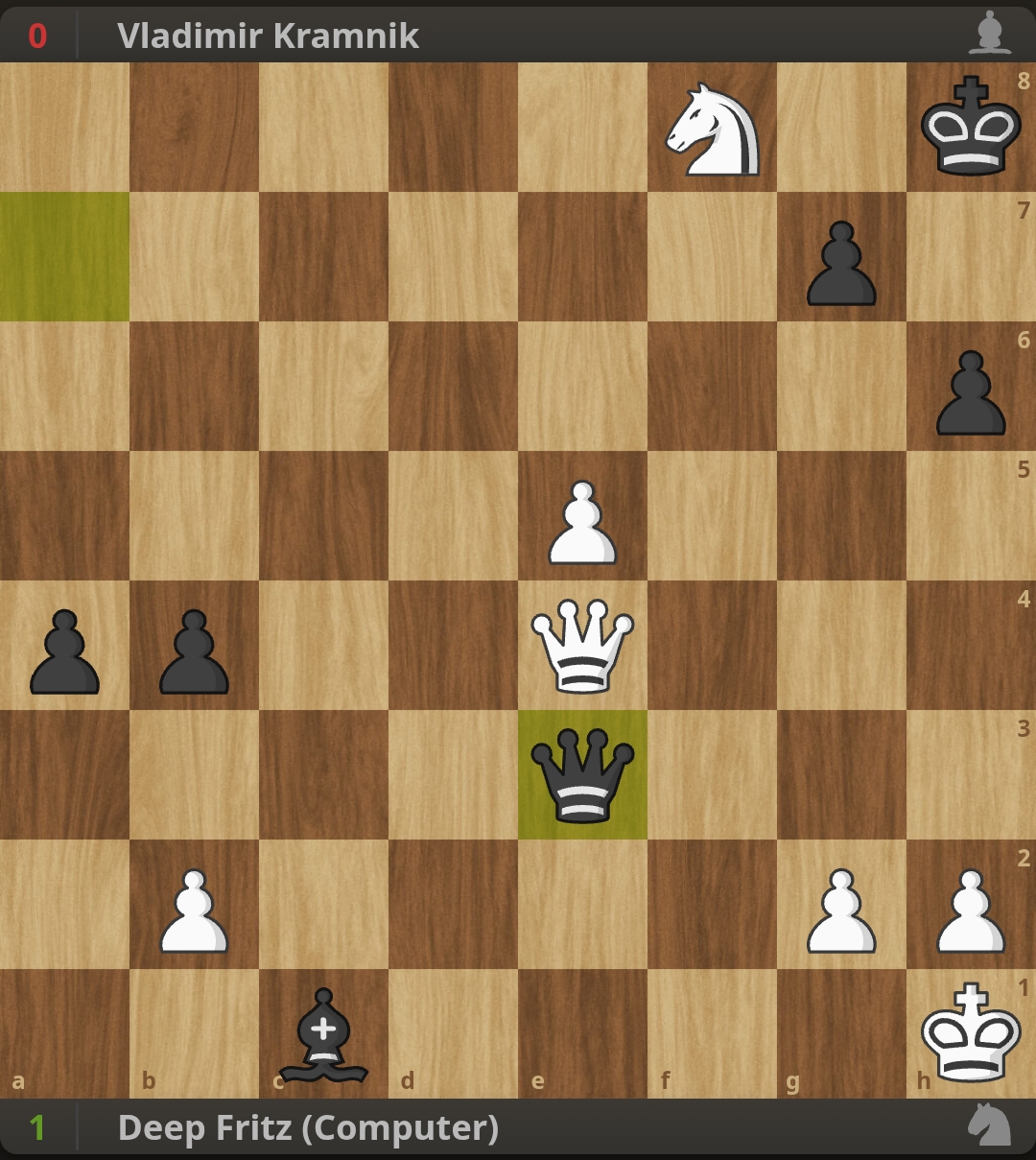
He completely failed to see that Deep Fritz could deliver checkmate in a single move with 35. Qh7#.
The mate was not hidden behind a complex tactical sequence. It was a straightforward queen move that an average player would have spotted instantly.
Kramnik resigned immediately upon seeing the mate.
- Bobby Fischer’s Infamous Bishop Blunder (1972)
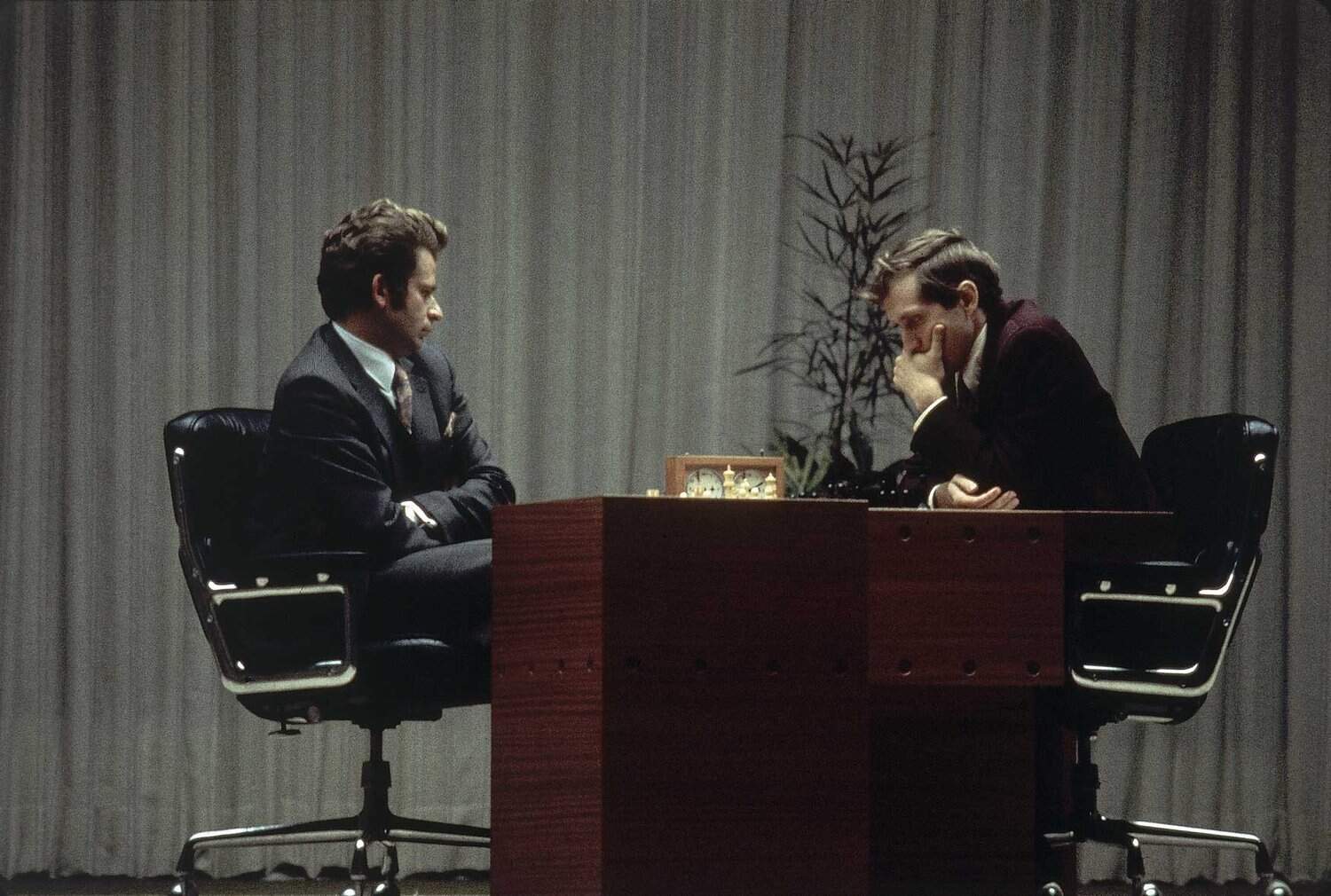
Bobby Fischer made one of the most shocking blunders during the opening game of his legendary match against Boris Spassky.
In Game 1 of the 1972 World Championship, Fischer found himself in a completely drawn endgame.
The position had equal pawns with the same colored bishops. Simple moves, and the game would fizzle out to a draw.
Instead, Fischer captured what chess players call a “poisoned” pawn with his bishop (29…Bxh2??).
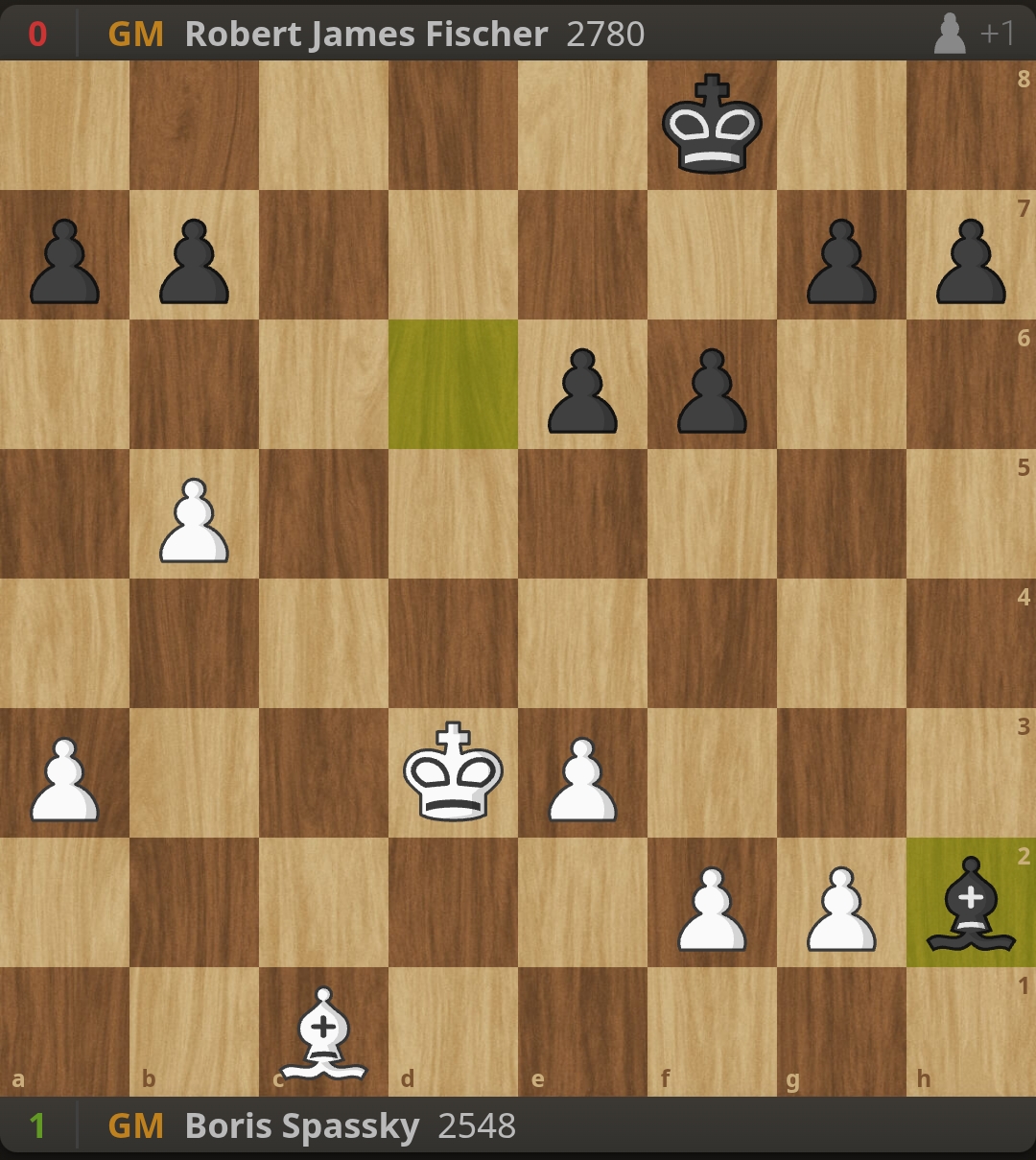
Spassky played the simple 30. g3, trapping the bishop. The trapped bishop was eventually lost, and Spassky won the game.
Fischer’s tactical radar was so finely tuned that seeing him miss a basic piece-hanging move was like watching a master chef burn toast.
Bobby Fischer, who is known for his best-selling book, Bobby Fischer Teaches Chess was the one being taught Vhess in this game
- Ding Liren’s World Championship Catastrophe (2024)
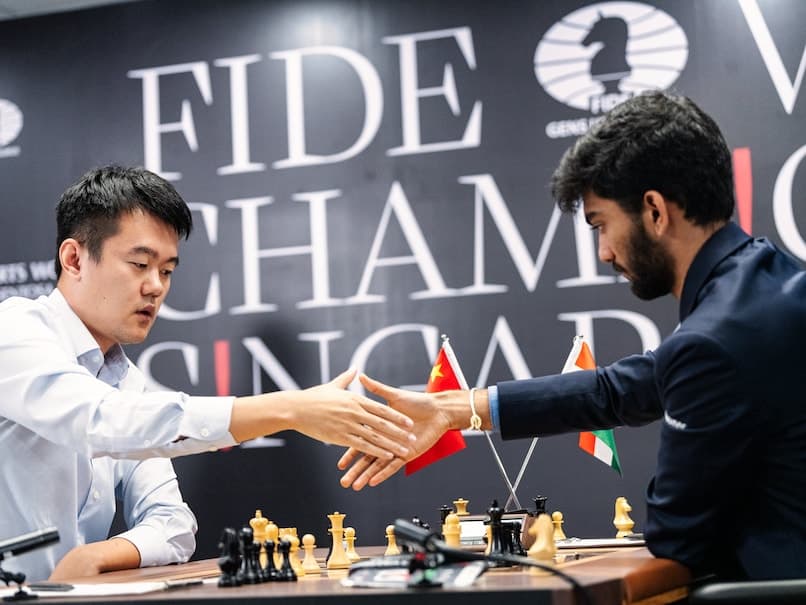
The final classical game of the World Championship match between Ding Liren and Gukesh D was dramatic as it remains one of the top chess moments from 2024.
In Game 14, with the match tied and everything on the line, Ding found himself in a tense but drawn endgame.
Ding Liren’s 55th move proved to be a catastrophic blunder.
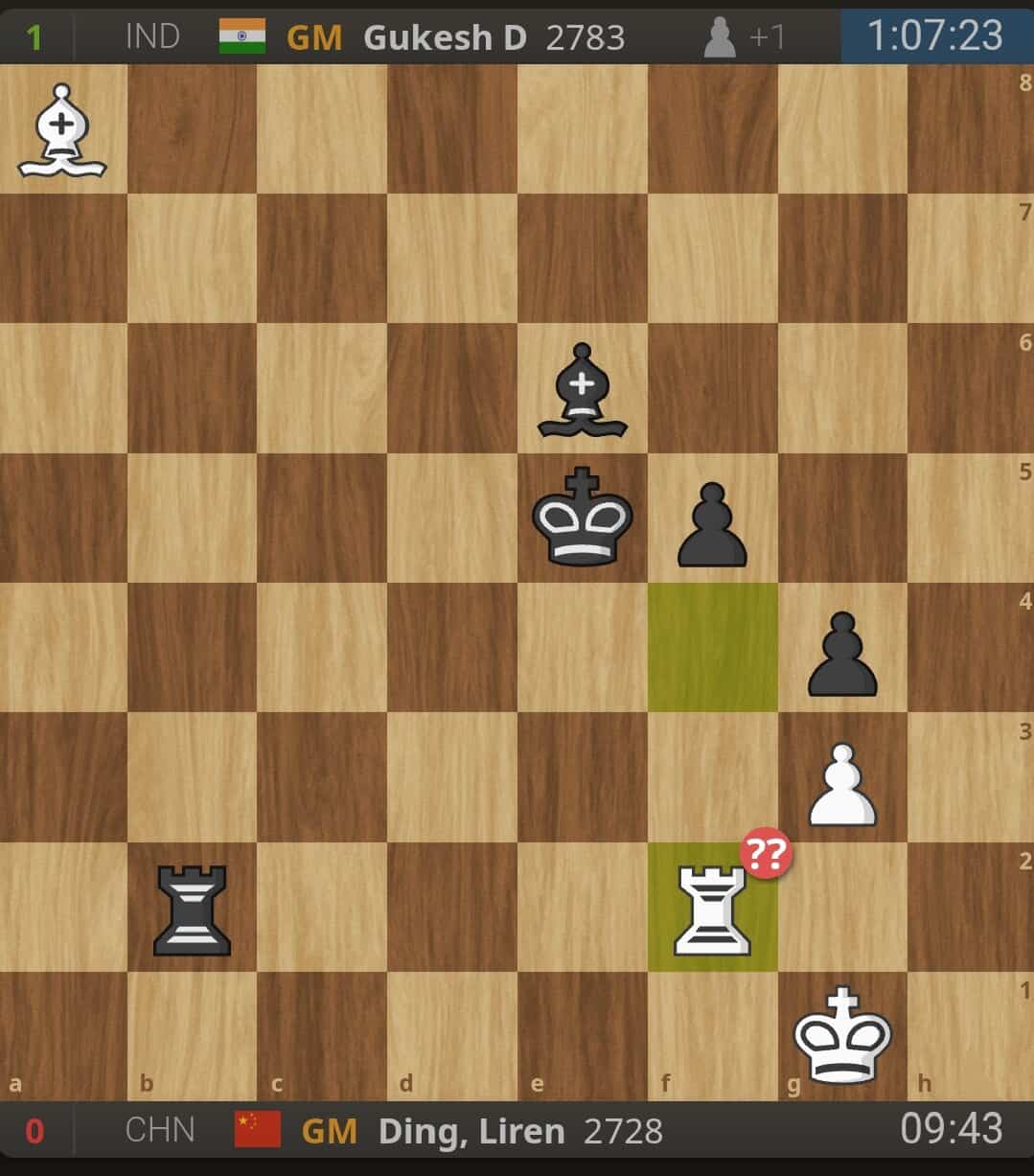
He moved his rook to f2, attempting to simplify the position and steer the game towards a draw.
Gukesh gladly traded the rooks and the bishops and entered a textbook winning King and pawn endgame.
Gukesh won the game and, with it, the World Championship title, becoming the youngest world champion in chess history.
- Ian Nepomniachtchi’s Hasty Move vs. Caruana (Sinquefield Cup 2024)
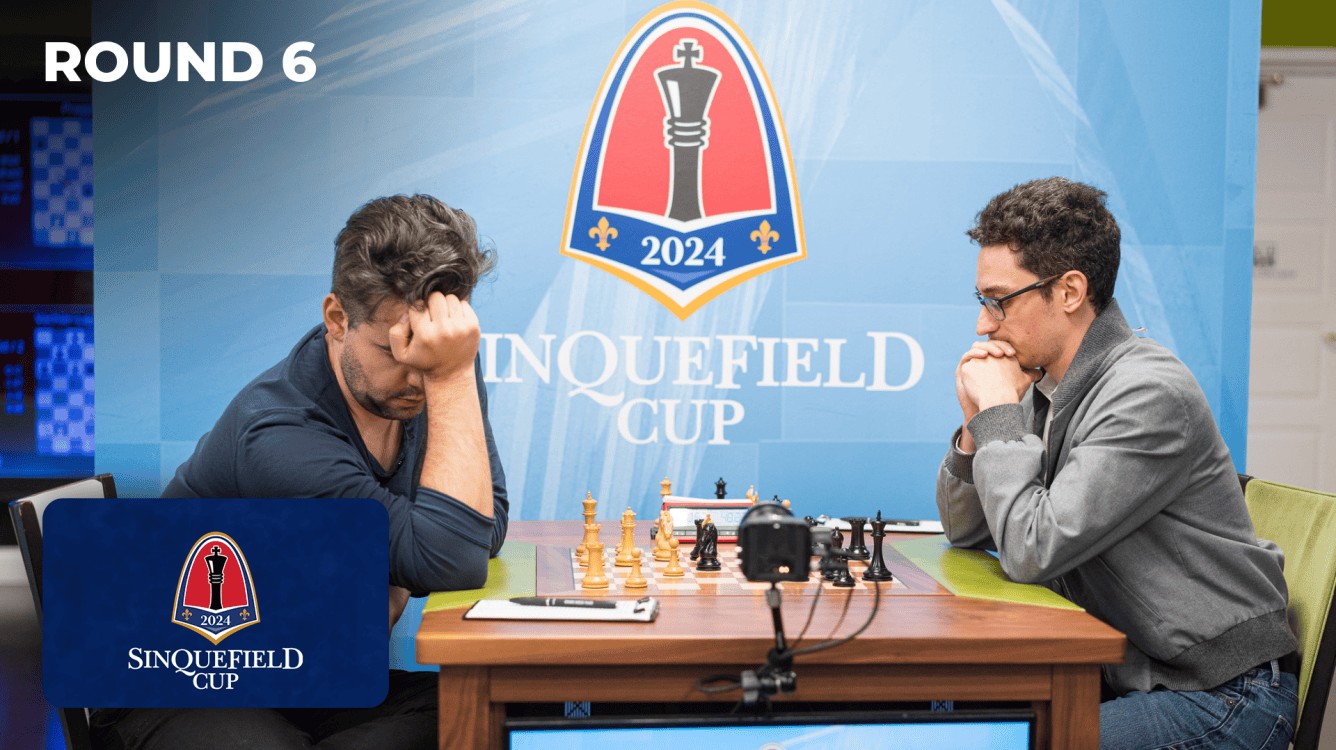
Ian Nepomniachtchi, the Russian super grandmaster, provides a textbook example of how overthinking can sometimes be less dangerous than underthinking.
In a crucial game against Fabiano Caruana, Nepomniachtchi had built up a substantial time advantage and held a promising position.
Despite having plenty of time to calculate, Nepomniachtchi played 18. g5?? almost instantly.
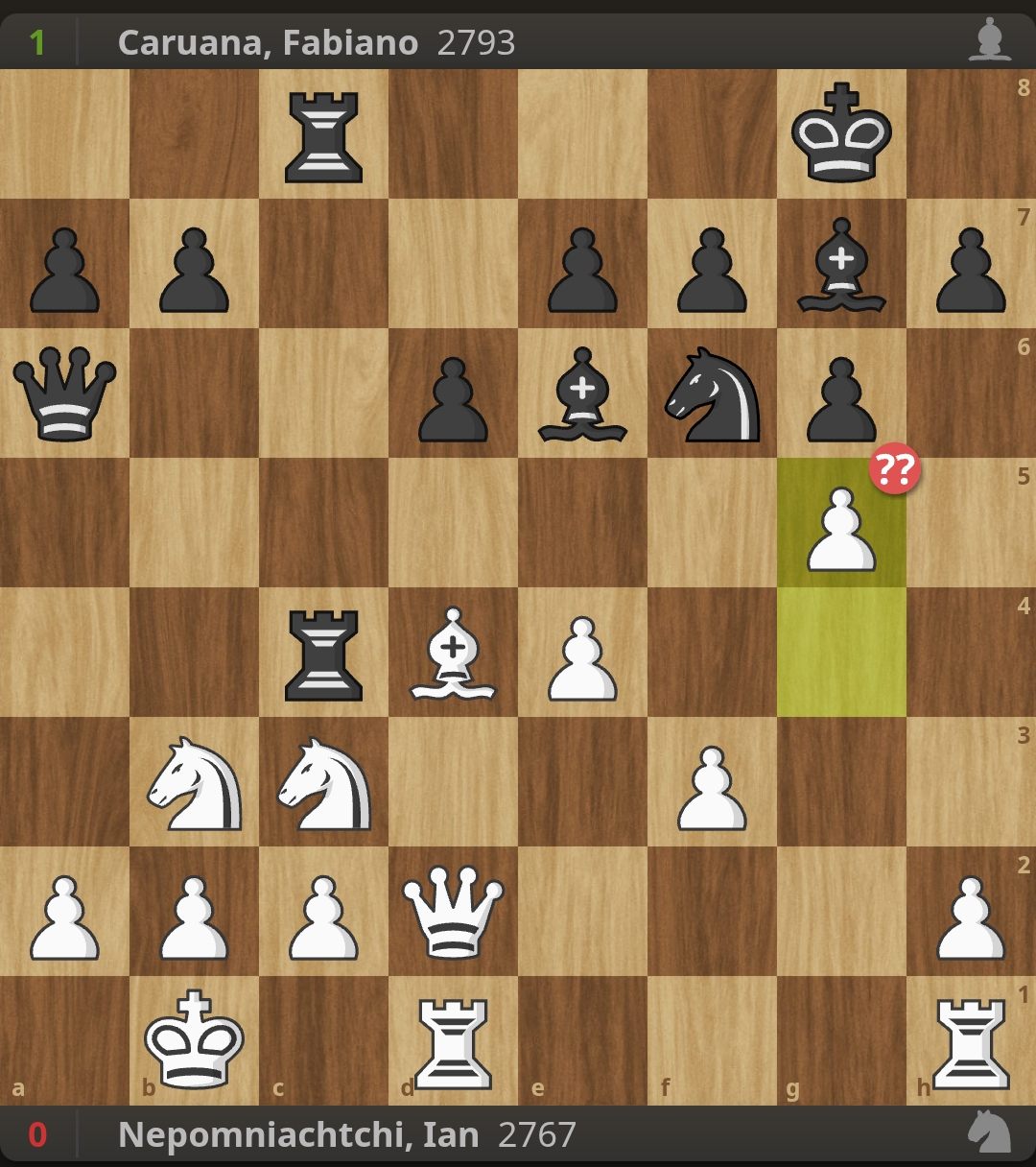
This was a blunder that was not just inaccurate but tactically disastrous.
The speed of the move suggested he had either miscalculated the consequences or had become overconfident in his position.
Caruana spent almost 20 minutes calculating what seemed like a home preparation move. After confirming that it was a blunder, he pounced.
Caruana played the thematic sacrifice on e4 and c3 that was the dream of every Sicilian Dragon player.
He played the instantly winning 18…Nxe4 ripping the position open.
The game ended a few moves later. Nepo had ample time to rue his rushed moves, though.
- Magnus Carlsen’s Time-Pressure Knight Blunder vs. Gukesh (Norway Chess 2025)
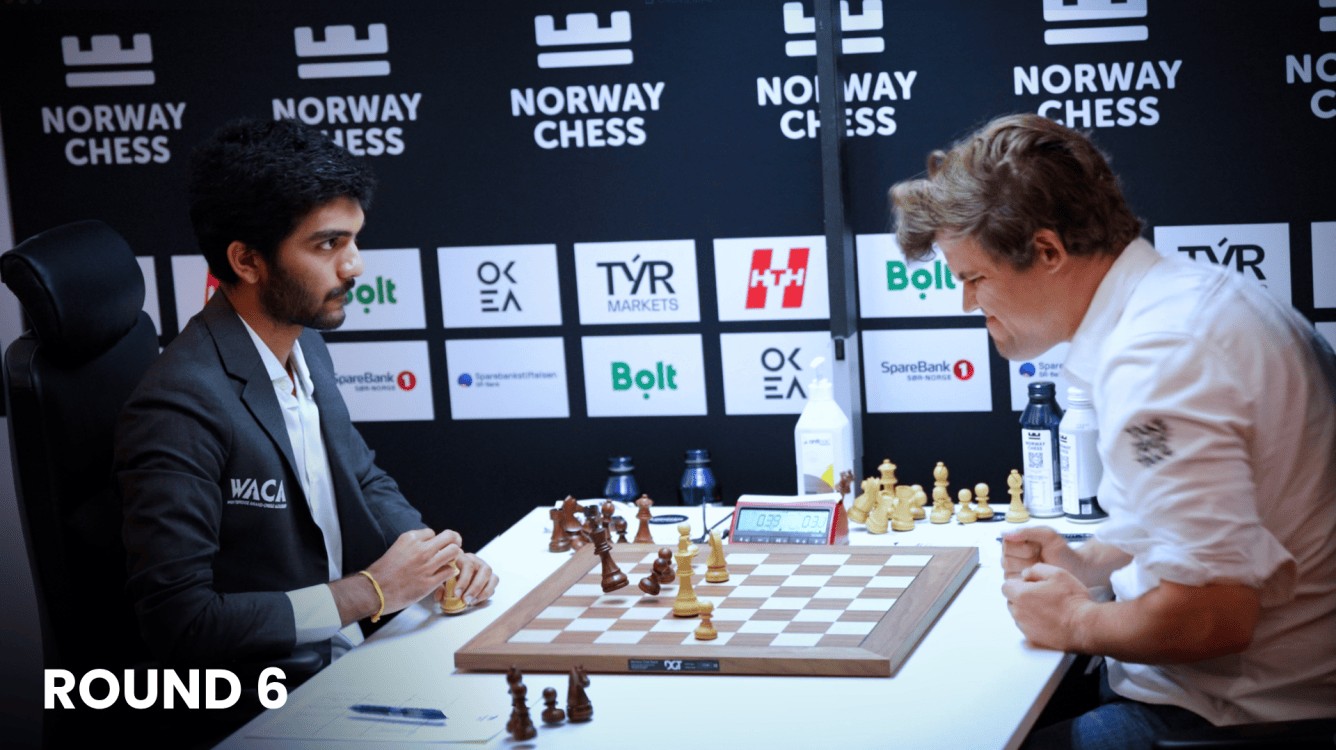
This game produced a table bang viral moment that spread beyond the chess world.
After outfoxing Gukesh earlier in the tournament, the players met again with colors reversed.
Carlsen had dominated the entire game, building up a winning position.
But Gukesh’s dogged defense made finding the knockout blow unusually hard for Magnus.
Then came the time scramble.
Under pressure, Carlsen played the losing 52… Ne2+, imagining some tactical novelty.
Gukesh, seeing no ghost, played 53. Rxe2, temporarily giving up the exchange.
After the flurry of captures, Gukesh was a full knight up.
Carslen tried to conjure some initiative with his passed pawns, which proved futile.
It was too costly a mistake, and the World Champion got his first victory over the World No. 1.
Carlsen’s frustration was visible as he reacted with a table slam.
Why Do Great Players Blunder?
We’ve seen that even the most elite chess players are not immune to blunders.
So, how can players who regularly calculate 15-20 moves deep miss something that a novice could spot?
Time pressure is perhaps the most significant factor.
As the clock ticks down, players can fall victim to the hasty decisions that lead to blunders.
When you have seconds to make a move, the mind doesn’t always function at peak efficiency.
Mental fatigue is an equally crucial factor. A player who has been calculating complex variations for hours on end is more susceptible to simple oversights.
Psychological stress plays an equally important role. The pressure of the moment can create a mental state where even simple calculations become difficult.
Overconfidence and pattern recognition failures are another culprit.
When strong players build up winning positions, they sometimes relax their vigilance. This can lead to careless moves that allow opponents to escape or even turn the tables.
What These Blunders Teach Us Mere Mortals
The most important lesson from these elite blunders is that everyone makes mistakes
If world champions can hang pieces and miss mate in one, blunders are a universal chess experience.
We can only reduce them by learning how to stop blundering in critical chess positions.
These examples highlight the crucial importance of double-checking “obvious” moves.
Many of these blunders occurred because the player was too confident in their calculations.
Many of these blunders also occurred under time pressure.
This means learning to manage your clock effectively is just as important as studying openings or tactics.
The examples also show the importance of maintaining perspective.
While these blunders were painful for the players involved, they didn’t define their careers or their worth as chess players.
Conclusion: The Very Human Side of Chess
Chess is a game where genius and blindness live side by side.
The same brilliant minds that create immortal games can also hang pieces in the most spectacular ways.
These blunders remind us that chess, for all its calculating precision, is ultimately a human game.
But here’s what separates legends from the rest of us: they didn’t let one mistake define them.
Kasparov came back stronger, Fischer remained a genius, Nepo bounced back, and Carlsen continues to dominate.
The next time you blunder your queen in a five-minute game, remember you’re in legendary company.
What’s your most painful chess blunder? Drop it in the comments, we’ve all been there.
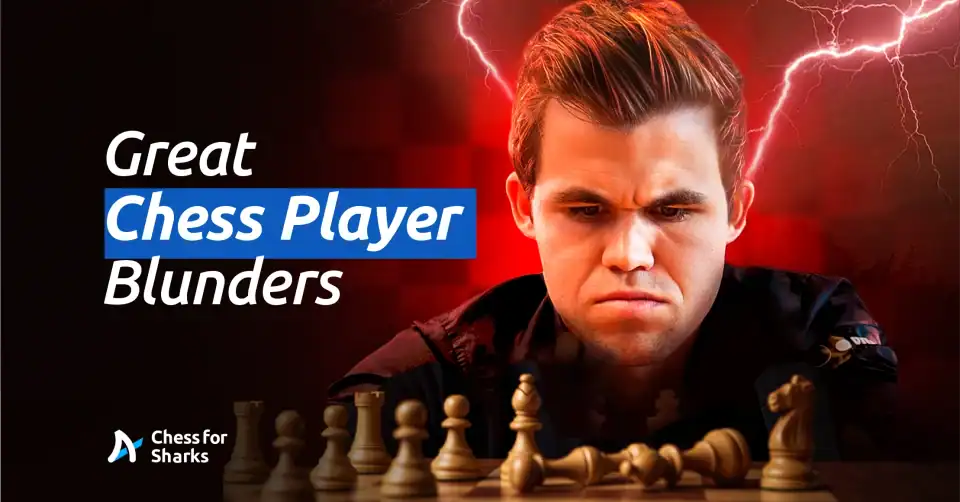


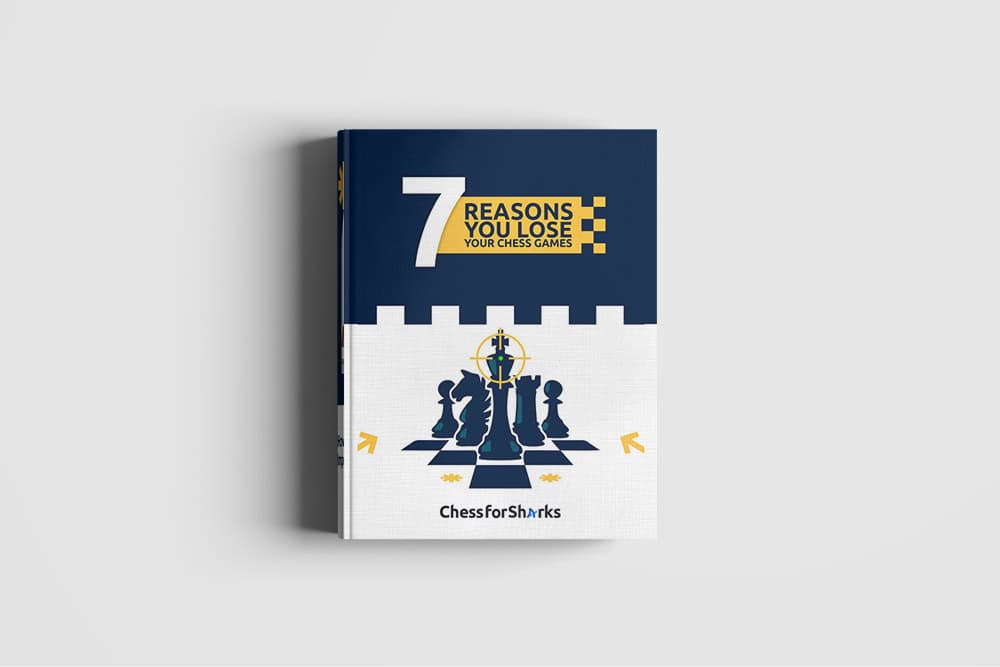

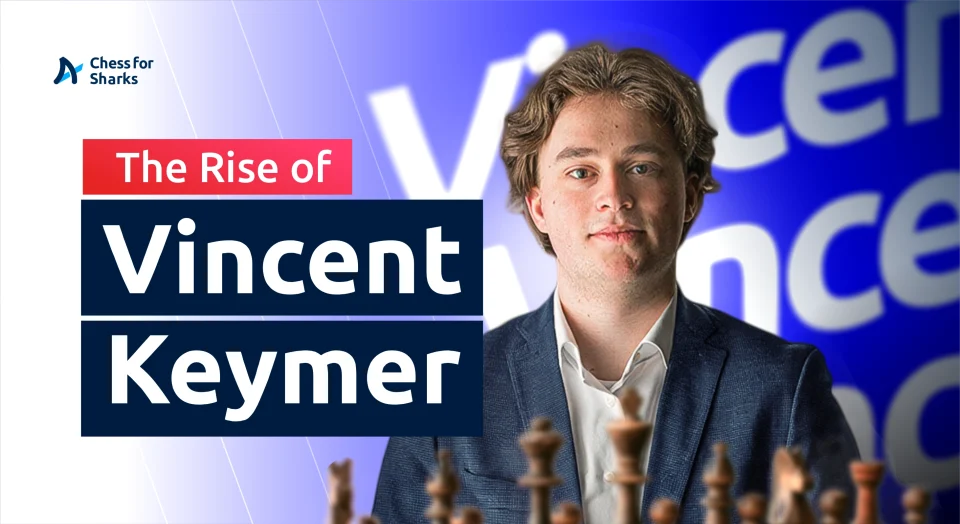

join the conversation